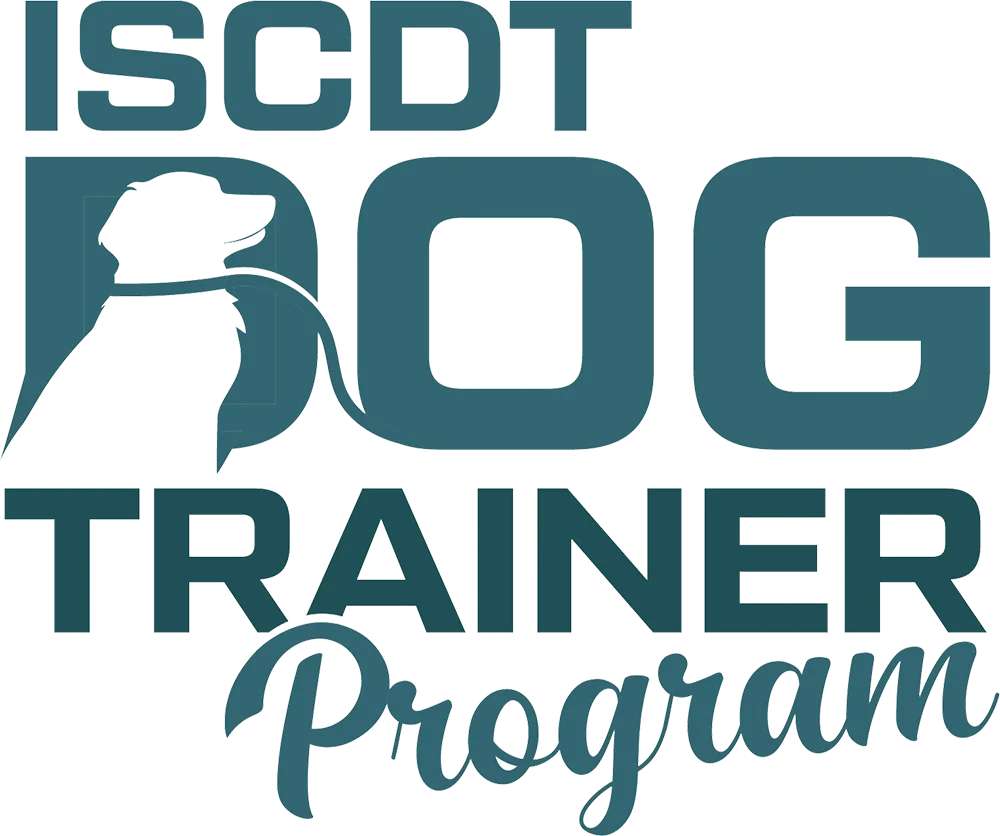As a professional dog trainer, having access to the right resources and implementing effective practices is essential for success in your field. In this blog, we explore 7 must-have resources and practices for dog trainers. These will help improve your skill set and training outcome for your human and canine clients.
Training Equipment
Familiarize yourself with different types of training equipment to find the tools your client dogs need. Not every dog should use the same equipment. We must put the dog’s needs first.

It’s important to spend time researching different types of dog-training equipment rather than depending on “internet” interpretation. In Lesson 18 of ISCDT’s course, students research the pros and cons for different types of equipment so they can make an educated decision on what they are comfortable (and trained) to work with and how that equipment will enhance, or hinder, training for client dogs.
Here is a short list of popular training equipment:
Clicker * Collars * Harnesses* Various Treats * Teat pouch * Leashes * Long Lead* Halti or Gentle Leader * Carabiner clip * Muzzle * Outdoor bed and training mats * Mat * Flirt Pole * Tug toys * Fetch toys * Targets * Agility equipment * Scent detection items * Scent dummies for tracking or retrieving * Protective gear * Hygiene and cleaning supplies * Tablet or notebook and pen * Schedulers * Enrichment items
Enrichment and Mental Stimulation:
Teaching your client about mental stimulation and enrichment games is essential for keeping dogs busy and mentally satisfied throughout their life. Many dog owners are unaware of the different activities they can provide for their dog. It is up to dog trainers to educate human clients on the various games, scent work, and other enrichment exercises available to stimulate their dog’s natural instincts and prevent negative behaviors.
Purdue University provides an important reminder about enrichment activities. “Enrichment is only valuable if it matters to the dog. An item or activity is not enriching if dogs do not use it, are afraid to use it, or are bored with it.”
Here are different ideas for enrichment activities:
Puzzle games * Lick mats * Treat-releasing balls * Snuffle mats * Flirt poles * Kongs or marrow bones * Nosework toys * Herding balls * Agility sets * Trick Training * Tether Tug * Treadmill workouts * Scavenger hunts * bikejoring or Skijoring * Dock diving * Trick training * Water Play * Trick training * Relaxation exercises* Flyball * Socialization * Train Walks
Clear Communication Techniques
Effective communication is vital for conveying instructions to dogs. Practice using clear verbal cues and hand signals. Ensure that the family continues to use the same cues.
In our recent blog post we highlighted the significance of being aware of our own body language. A common scenario we see involves individuals using poor body language when they instruct a dog to sit. When the dog fails to comply, the handler often bends at the waist, brings their face closer to the dog’s, while repeating the command.
In canine terms, encroaching into a dog’s personal space is deemed rude and possibly aggressive in the dog’s mind. Moreover, it poses risks such as sustaining a broken nose if the dog jumps up or receiving a facial bite from a nervous or frustrated dog.
It is also important to remind dog owners that learning takes time. Dogs learn through repetition and when we properly mark behavior. Encourage human clients to be patient and consistent in interactions with their dog.
Behavior Modification Strategies
Understanding behavior modification strategies is essential for addressing problem behaviors and promoting positive changes in dogs’ behavior. Learn techniques such as desensitization and counterconditioning to help dogs overcome fear, anxiety, and aggression.
Work collaboratively with clients to develop personalized behavior modification plans tailored to their dog’s specific needs and challenges. Provide the information outlined above and stress the importance of training with their dog each day.
Continuous Professional Development
Dog trainers should continue their professional development in order to stay informed about the latest research, techniques and trends in dog training.
Participate in courses offered by dog trainer programs, pursue certifications and credentials through programs that offer both hands-on techniques and book knowledge. While achieving popular certifications is appealing, obtaining a certification is more than initials after your name. More than passing a test.
A certification demonstrates your knowledge in the field of dog training. Knowledge is achieved through classroom study, independent research and relevant hands-on experience.
In addition, trainers should attend workshops, seminars, and conferences. They should also engage in webinars, read relevant materials and participate in positive online forums (stay away from forums where trainers attack one another).
Client Education and Support

Don’t forget the human client when you focus on education and support. Your training session is likely the first time dog owners learn techniques. Until that time, many depend on outdated handling skills they learned as children and techniques they learn on the internet.
While those techniques may be foundational information, clients don’t learn how to generalize the training. Brainstorm ways you can help your clients change what they know about dog training so they teach their dog using modern practices.
Here are a few ideas:
Provide step-by-step instructions * Hands-on practice * Written instructions * Video tutorials * Homework assignments * Training guides * Videos * Recommended reading materials
Remember that your human clients are learning too. Provide ongoing support and guidance to help dog owners on the dog training journey. When you provide feedback on their training skills, be sure to provide plenty of encouragement and troubleshooting assistance as needed.
Ethical and Professional Standards
Adhere to ethical and professional standards in your dog training practice to maintain the trust and confidence of your clients and colleagues.
Conduct yourself with integrity, honesty, and transparency in all your interactions. Prioritize the welfare and well-being of the dogs in your care. Maintain professional boundaries at all times.
Compassionate and Empathetic Approach
Approach your work with compassion, empathy and a genuine desire to help dogs and their owners succeed. In a world that loves to talk, become the trainer who actively listens to your clients’ concerns and perspectives, and validates their feelings and experiences.
Offer support, encouragement, and reassurance. Remember to celebrate their successes along the way. When you demonstrate compassion and empathy in your interactions, you’ll build trust and a great rapport with your clients. You will also create a positive and supportive training environment for both dogs and humans.
In conclusion
By incorporating these 7 must-have resources and practices for dog trainers, you can enhance your effectiveness, improve outcomes for your clients and their dogs and elevate the standard of care in the field of dog training.
Remember, continuous learning, clear communication, ethical conduct and a compassionate approach are the keys to success in this profession. Embrace these resources and practices in your business, and you’ll be well-equipped to make a positive impact in the lives of dogs and their owners.
Interested in a deeper discussion on this topic, then you’ll want to listen to the podcast episode associated with this blog post. You can locate our podcast, The Podcast for Up In Coming Dog Trainers, Season 2 Episode 2 on Apple or Spotify on Friday, March 29, 2024.
Katie McKnight
ISCDT – Dog Trainer Program offers an online program consisting of 18 hands-on lessons, where students are required to work with dogs. Skill and ability is determined through a series of videos submitted to your personal ISCDT mentor. Students also complete written homework assignments. In addition to the online program, we also offer in-person shadow programs. To learn more about the courses we offer, visit ISCDT.com
